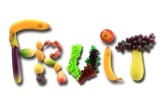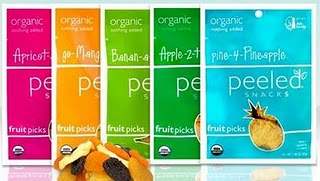All Dried Up
One of many excuses people use for their lack of fruit consumption is the short shelf-life. To gain the optimal nutrient content, it is important to consume fruit while it is fresh.

Thus, to manage the rapid spoilage time, one needs to consume fruit quickly after bringing it home from the store or farmer’s market. Many are curious whether there are any other options to choosing fresh fruit, and still gain vitamins and fiber. Dried fruit is an easy and delicious snack that can remain fresh, but how does it compare to the real thing?
Benefits:

The great things about dried fruit are that it has a long shelf-life and is portable. Plus, dried fruits are mostly free of fats, cholesterol, and sodium. Foods with little or no fats, cholesterol, and sodium can help maintain heart health and have been shown to assist weight loss in overweight or obese individuals.
There is a wide variety of dried fruit on the market, including: apples, apricots, mango, banana, raisins, cherries, and pineapples. With all these choices, it is easy to find the dried alternative to one of the fruits that you love. Better still, these fruits will, for the most part, retain the nutritional value of fresh fruit. Peeled Snacks (www.peeledsnacks.com) is an excellent example of a company offering a delicious variety of dried fruits. There product line features fantastic dried fruits–so much more than just raisins, but rather products such as Banan-a-peel, Much-ado-about-mango, Pine-4-pineapple, and other interesting varieties.

Dried fruits pack a nutritional punch. For example, dried apricots and peaches are rich in potassium, vitamin A, and iron. They are high in fiber, which helps with constipation, provides satiety, regulates blood sugar, and is shown to lower LDL and total cholesterol. This sweet treat can be a healthy substitute to candy or other sugary snacks.
Disadvantages:
When eating dried fruit, portion control is important. For examples, one cup of fresh grapes is about 104 calories. A cup of raisins (dried grapes) is about 450 calories. So, a serving size of dried fruit is about half a cup of dried fruit for every cup of fresh fruit.
Another reason to limit consumption of dried fruit is that often manufacturers will add sugar (not table sugar, but sucrose) and remove water to make the fruit less tart or sour and more concentrated (think: fresh vs. dried cranberries). Preservatives such as sulfur dioxide may also be added. Sulfur dioxide, and other similar preservatives, are used as antioxidants. These antioxidants are intended to keep the fruit light in color, and prevent flavor alteration.
The important thing to remember is: whether it is a pineapple or prune, a cranberry or a cherry–dried fruit, like most foods, should to be eaten in moderation!
Check out the delicious options Peeled Snacks has available at www.peeledsnacks.com.
References:
http://www.livestrong.com/article/90562-dried-fruit-nutrition/
http://www.mypyramid.gov/pyramid/fruits_counts.html
http://en.wikipedia.org/wiki/Dried_fruit#Nutritional_Quality_and_Nutrient_Composition